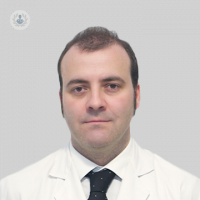5 Key points about prostate cancer
Written by:
What is the prostate?
The prostate is a gland that is part of the urinary tract and male reproductive system, is located at the outlet of the bladder and part of the bladder neck and urethra. Its function is primarily involves the breeding and maturation of sperm by their secretion, part of the content of semen.
What is the cause of prostate cancer? Is it hereditary?
The cause of prostate cancer is one of the facts that more is being investigated at present and that has been investigated in recent years. It is known to be some genetic alterations leading to chromosomal aberrations and the onset of prostate tumors.
One of the ways that most relationship to the onset of prostate cancer is the metabolic pathway of cholesterol and all its derivations and on whether it is inherited, it is known that patients who have first-degree relatives, such as father or brothers, with affections of prostate cancer are at higher risk for prostate cancer. That is why this type of patients is recommended greater prevention newspapers more controls.
Can it be prevented?
Today, unfortunately, it still can not prevent. It is known that there are different substances, such as tomatoes, vitamin E, lycopene and pumpkin seeds, which can have a positive effect slowing the onset of prostate cancer, but there is no prevention factor, as can be quitting in the case of lung and bladder cancer or sun exposure in the case of skin cancer.
What life expectancy has a patient with prostate cancer?
The life expectancy of patients with prostate cancer is highly variable and depends primarily on risk groups. We Urologists , depending on the clinicopathological variables presented by each patient, stratify patients into different risk groups. Fortunately, the vast majority of patients, 60%, are grouped in what we call low or very low risk, which means that these patients will die of their prostate cancer.
What progress currently exist to treat it ?
Fortunately, in recent years there has been a revolution of new treatments in prostate cancer, dividing patients at different stages and risk groups in patients with tumors of low or very low risk.
There has been a revolution in what the active surveillance programs or focal treatments that claim to treat focal lesion within the prostate and not the entire prostate and radical treatments. With this decreased the side effects of radical treatments and improved the quality of life of these patients is achieved.
In patients with tumors or disseminated metastatic disease distance, developments have been especially new drug treatments with chemotherapy molecules, novel hormonal treatments, drugs directed against the bone, vaccines etc., which have allowed a increased life expectancy of these patients with a substantial improvement in their quality of life.



